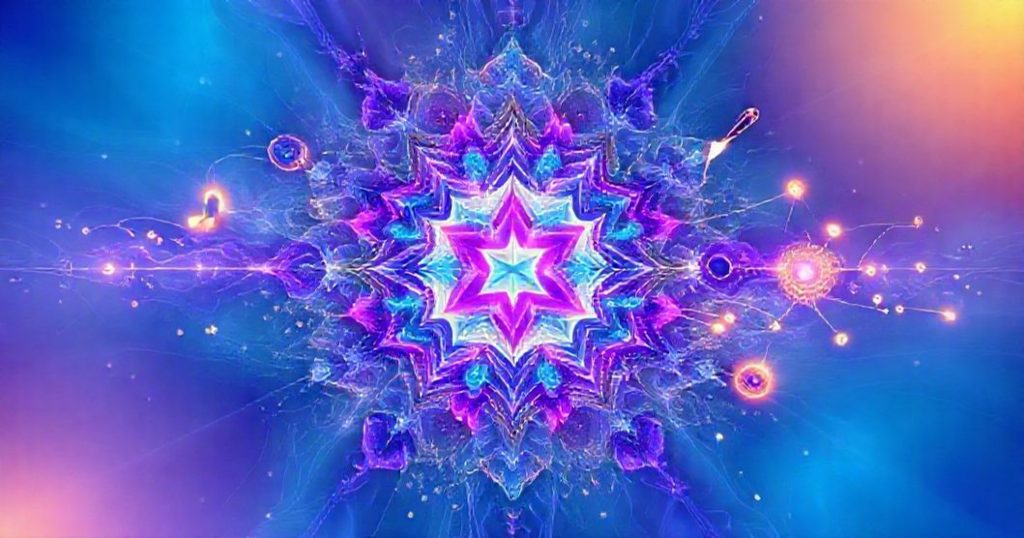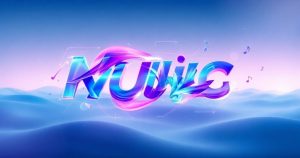Introduction to AI-Generated Fractal Art
AI-generated fractal art has undergone a significant transformation in recent years, evolving from simple geometric patterns to complex, visually stunning creations. This shift is largely attributed to advancements in artificial intelligence and machine learning, which have enabled the development of sophisticated algorithms capable of generating intricate fractal patterns. The integration of AI in fractal art has not only expanded the creative possibilities for artists but has also made it more accessible to a wider audience, including those without extensive technical backgrounds.
The process of creating AI-generated fractal art involves the use of neural networks that are trained on vast datasets of images. These networks learn to recognize and replicate patterns, allowing them to generate fractals that are not only aesthetically pleasing but also mathematically precise. Furthermore, the use of AI in fractal art enables the exploration of new dimensions and patterns that would be challenging or impossible for humans to create manually. This has led to the emergence of new styles and trends in fractal art, pushing the boundaries of what is possible in the digital art world.
One of the most significant advantages of AI-generated fractal art is its ability to produce unique and intricate patterns with ease. Traditional methods of creating fractals often require a deep understanding of mathematics and programming, limiting the accessibility of this art form. In contrast, AI-powered tools have democratized fractal art, allowing anyone with an interest in creativity and design to explore and contribute to this vibrant community. Whether you are an experienced artist looking to expand your skill set or a novice enthusiast seeking to explore new forms of creative expression, AI-generated fractal art offers a wealth of opportunities for innovation and self-expression.
As we delve into the world of AI-generated fractal art, it becomes clear that the possibilities are endless. From the mesmerizing beauty of Mandelbrot sets to the intricate complexity of Julia sets, each fractal pattern tells a story of mathematics, art, and the human imagination. The future of fractal art is undoubtedly tied to the continued advancement of AI technology, and as these tools become more sophisticated, we can expect to see even more breathtaking and innovative creations. For those interested in exploring this fascinating world, there are numerous free AI tools and resources available, such as Icebox AI, which offer a gateway into the exciting realm of AI-generated fractal art.
Understanding Fractal Art and Its Evolution
Fractal art, in its traditional form, has been a subject of fascination for decades, with its roots in mathematics and geometry. The term ‘fractal’ was coined by mathematician Benoit Mandelbrot in 1975, derived from the Latin word ‘fractus,’ meaning broken or fractured. Fractals are characterized by their self-similarity at different scales, exhibiting patterns that repeat themselves in a consistent manner. This unique property of fractals has captivated artists and scientists alike, leading to the development of various techniques for generating and visualizing fractal patterns.
The evolution of fractal art has been marked by significant milestones, from the early experiments with fractal geometry to the current era of AI-generated fractals. The advent of computer graphics and programming languages like fractal geometry languages (FGL) and Apophysis has played a crucial role in the development of fractal art, enabling artists to create complex fractal patterns with greater ease and precision. However, the process of creating fractals using these methods can be time-consuming and requires a considerable amount of technical expertise, limiting the accessibility of fractal art to a wider audience.
The integration of AI in fractal art has revolutionized this landscape, offering unprecedented creative possibilities and simplifying the process of generating fractals. AI algorithms can learn from existing fractal patterns and generate new ones that are not only unique but also reflect the underlying mathematical structures that define fractals. This capability has opened up new avenues for artistic expression, allowing creators to explore novel patterns, colors, and textures that were previously unimaginable. Moreover, the use of AI in fractal art has facilitated the creation of interactive and dynamic fractals, which can respond to sound, movement, or other environmental stimuli, further enriching the viewer’s experience.
AI-Generated Fractal Art Trends in 2025
As we look to the future of AI-generated fractal art in 2025, several trends are expected to emerge and shape the landscape of digital art. One of the most anticipated developments is the increased use of generative adversarial networks (GANs) in fractal art. GANs are a type of deep learning algorithm that can generate highly realistic images, including fractals, by learning from existing datasets and competing with each other to produce the most realistic outputs. The application of GANs in fractal art is expected to lead to the creation of more sophisticated and detailed patterns, pushing the boundaries of what is possible in this art form.
Another trend that is gaining momentum is the integration of AI-generated fractal art with virtual and augmented reality (VR/AR) technologies. The immersive nature of VR/AR provides a unique platform for experiencing fractal art, allowing viewers to step into the intricate patterns and explore them from multiple perspectives. This fusion of technologies is expected to redefine the way we interact with and appreciate fractal art, offering new dimensions of creativity and engagement. Furthermore, the use of AI in generating fractals for VR/AR environments is anticipated to facilitate the development of more interactive and dynamic experiences, where fractals can respond to the viewer’s movements and actions.
The future of AI-generated fractal art also holds promise for therapeutic and educational applications. The mesmerizing patterns and colors of fractals have been known to have a calming effect on the mind, and their mathematical basis makes them an excellent tool for teaching concepts such as self-similarity, scaling, and geometry. AI-generated fractals can be tailored to specific needs and preferences, making them a valuable resource for art therapy and educational programs. Additionally, the accessibility of AI-powered fractal art tools is expected to democratize access to these therapeutic and educational benefits, reaching a broader audience and promoting a deeper appreciation for the intersection of art and mathematics.
Features and Benefits of AI-Generated Fractal Art
AI-generated fractal art offers a multitude of features and benefits that make it an exciting and rewarding field of creative expression. One of the primary advantages of using AI in fractal art is the speed and efficiency with which complex patterns can be generated. Unlike traditional methods, which can be time-consuming and labor-intensive, AI algorithms can produce intricate fractals in a matter of seconds, allowing artists to explore a wide range of ideas and concepts in a short amount of time.
Another significant benefit of AI-generated fractal art is its accessibility. AI-powered tools have made it possible for individuals without extensive mathematical or programming backgrounds to create stunning fractal patterns. This democratization of fractal art has led to a proliferation of creative works, as people from diverse backgrounds and skill levels contribute to the vibrant community of fractal artists. Moreover, the use of AI in fractal art has facilitated collaboration and exchange among artists, with many creators sharing their techniques, algorithms, and inspirations online, further enriching the collective creative landscape.
The aesthetic appeal of AI-generated fractal art is another key feature that has captivated audiences worldwide. The unique blend of mathematical precision and artistic expression has resulted in the creation of visually stunning patterns that are both beautiful and thought-provoking. Whether used in digital art, design, or as a standalone piece, AI-generated fractals have the power to inspire, educate, and mesmerize, making them a valuable addition to any creative project or collection. For those looking to explore this fascinating world, Icebox AI and similar platforms offer a comprehensive introduction to the tools and techniques of AI-generated fractal art.
Frequently Asked Questions About AI-Generated Fractal Art
Q: What is AI-generated fractal art?
A: AI-generated fractal art refers to the use of artificial intelligence algorithms to create fractal patterns. These algorithms can learn from existing fractals and generate new ones that are unique and often exhibit complex mathematical properties.
Q: How is AI-generated fractal art created?
A: The creation of AI-generated fractal art involves the use of neural networks that are trained on datasets of fractal patterns. These networks can then generate new fractals based on the patterns and structures they have learned from the training data.
Q: What are the benefits of using AI in fractal art?
A: The use of AI in fractal art offers several benefits, including increased speed and efficiency in generating complex patterns, accessibility for individuals without extensive mathematical or programming backgrounds, and the potential for new and innovative artistic expressions.
Q: Can I create AI-generated fractal art without technical expertise?
A: Yes, with the advent of AI-powered tools and platforms, it is now possible for individuals without extensive technical backgrounds to create stunning fractal patterns. These tools provide user-friendly interfaces and often include tutorials and guides to help beginners get started.
Conclusion: Embracing the Future of AI-Generated Fractal Art
In conclusion, AI-generated fractal art represents a fascinating convergence of technology, mathematics, and creativity. As we look to the future, it is clear that this field will continue to evolve and expand, offering new possibilities for artistic expression, therapeutic applications, and educational resources. For those interested in exploring this captivating world, the journey begins with an understanding of the basics of fractal art and the role of AI in its creation. With the right tools and a willingness to learn, anyone can become a part of this vibrant community, contributing to the ever-unfolding tapestry of AI-generated fractal art.
The future of digital art is undoubtedly intertwined with the advancements in AI technology. As AI algorithms become more sophisticated, we can expect to see even more breathtaking and innovative creations. The accessibility and creative potential of AI-generated fractal art make it an exciting field for both seasoned artists and newcomers alike. Whether you are looking to explore new forms of artistic expression, seeking inspiration for your next project, or simply fascinated by the intersection of art and mathematics, AI-generated fractal art is sure to captivate and inspire. Start your creative journey today with Icebox AI and discover the endless possibilities of AI-generated fractal art.



